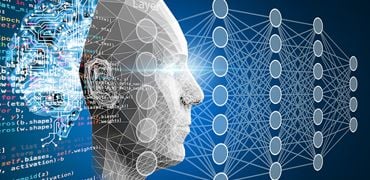What is R Coding Language and Why is it so Important?

In today’s data-oriented world, it’s good to be familiar with everything related to data. One of these is the R programming language; it’s fascinating and a guaranteed way to boost your resume. R has a wide range of applications in diverse fields, such as software development, business analysis, statistical reporting, and scientific research. And that, in turn, has increased its demand among businesses. So, if you want to learn the R coding language and make a career in any of the above domains, this article offers insight into the topic.
What Exactly is the R Programming Language?
R is a free programming language often used as statistical software and a tool for analyzing data. It comes with the command-line interface, which consists of a prompt and is usually represented by the ‘>’ character. Also, it is flexible enough to work with Microsoft Windows, Linux, and Apple macOS, operating systems that people typically use.
The R coding language has an extensive library primarily written in C, C++, Fortran, and R. In fact, this software is exclusively used for statistical and graphical techniques, including statistical inference, time series, linear regression, and machine learning (ML).
Examples of the R Coding Language
Some of the common examples of this programming language are:
- Finding the factorial of a number
- Taking input from the user
- Checking whether a number is prime or not
- Finding the sum, mean, and product of the vector
- ‘Hello World’ in the R program
Why Use This Language?
R is popular among data analysts and research scientists as it helps them import and clean data and perform effective quantitative analyses. Moreover, R coding was among the top five programming languages of the year as of August 2021. Apart from this, many reasons make R so useful.
- R is applicable in data analysis, including ML and statistical analysis
- It is compatible with any operating system
- It’s a free, open-source programming language, allowing companies to use R coding without the need for a license
- R can be used not only to run statistical packages but also in combination with other languages (such as C and C++)
- R is one of the most in-demand programming languages, which makes it an important language to learn if you want to work in the growing data science field
ALSO READ: A Coding Language List for Every Type of Coder: What’s Your Pick?
A Brief History of R
Robert Gentleman and Ross Ihaka, professors at the University of Auckland, New Zealand, were the first to discover R in the early 1990s. The R language was based on the S language. A statistical programming language to turn ideas into software for statistical computing, S was created by researchers including John Chambers, Rick Becker, Trevor Hastie, Allan Wilks, and Judy Schilling, and their colleagues in the mid-1970s at Bell Labs (an American firm that specializes in scientific and industrial research and development). In fact, it was available to the public in the early 1980s. In 1995, Gentleman and Ithaka made R an open-source project. Since 1997, the R Core Group has been in charge of the R project, and the first version of R was released in February 2000.
The Current Popularity of R by Industry and Job Type
In today’s technology-driven world, R is gaining immense popularity. Almost two milliondata scientists and statisticians worldwide use R coding to develop business applications. Here are some of the examples that demonstrate how popular R is among top giants.
- Facebook uses R to change its status and its social network graph.
- The Ford Motor Company uses R for statistical analysis and to help people make data-based decisions.
- Google uses R to determine the return on investment of advertising campaigns, predict economic activity, and make online advertising more effective.
- Foursquare’s famous recommendation engine has R as a key element.
- John Deere’s statisticians use R to model time series and do geospatial analysis in a reliable and easy way to repeat.
- Microsoft uses R as a statistical engine in the Azure ML framework and for the Xbox matchmaking service.
- The New York Times uses R during the news cycle to crunch numbers and make graphics.
- Thomas Cook uses R to make predictions and Fuzzy Logic Systems to set the prices of their last-minute deals automatically.
- The U.S. National Weather Service’s River Forecast Centers use R to make pictures that are used to predict floods.
- Twitter has R as a statistical modeling tool in its data science toolbox.
- Trulia, an American real estate website, uses R to predict house prices and crime rates in a given area.
- ANZ, which is Australia’s fourth-largest bank, uses R to analyze credit risk.
The Advantage and Disadvantages of R
Advantages
- As R is an open-source programming language, you can apply this language anytime and anywhere
- R works on every operating system (such as Windows, macOS, and Linux), so developers only have to make one program that works on all of them
- R is great for statistical analysis, and given the importance and value of statistics today, programmers favor R over other languages for creating statistical tools
- Machine learning tasks like regression and classification are perfect for R, which also has many features and packages for developing artificial neural networks
- You can ‘wrangle’ data with R; it has several packages that help data analysts clean up and organize messy, unstructured data
- R keeps changing, growing, and improving with frequent updates and enhancements.
Disadvantages
- R has a high learning curve, so ideal candidates for this language are those who have prior programming experience
- Since R lacks fundamental security precautions, it is not a suitable option for developing web-safe applications.
- Compared to other programming languages, such as Python or MATLAB, R is more cumbersome
- It needs a lot of space, and R doesn’t do a great job of managing memory. The information about R must be kept in physical memory, like the RAM
- Documentation and software packages may be spotty, inconsistent, or lacking—the cost of using a language that is maintained and improved by the community rather than receiving official, devoted support
If we overlook the disadvantages associated with R coding, it is an excellent resource for data analysis and exploration. This programming language is used for sophisticated analysis, such as clustering, correlation, and data reduction. In fact, the success of ML deployment hinges on the quality of the feature engineering and model used.
Frequently Asked Questions
1. Is R Similar to Python?
Python is a high-level, general-purpose programming language known for having a syntax that is easy to understand and looks like natural language. Python code can be used for many different areas, including data science and analysis, web applications, and automation/scripting. R is a programming language for statistics that can be used for statistical computing and to show data. It’s numerous abilities can be put into three main groups:
- Manipulation of data
- Analysis of the numbers
- Visualization of data
Regarding similarities, Python and R are free, open-source programming languages. Moreover, they can both run on Windows, macOS, and Linux. Also, both languages can be used for any kind of data analysis task.
2. What Type of Coding is R?
R is an open-source programming language that is best for statistical analysis and showing how data looks. In fact, it has a large ecosystem with complex data models and elegant tools for reporting data.
3. Is R Better Than Python?
Both languages have their unique advantages. R could be a good fit if you are interested in the statistical calculations and data visualization parts of data analysis. But Python would be a better choice if you want to become a data scientist. It is ideal for work on big data, artificial intelligence, and deep learning algorithms. Python is a general-purpose language that can be used for much more than just R.
If you are interested to learn more about R coding, you can explore Emeritus online coding courses to gain more insights. The topmost universities and experts curate these courses to enhance your skills and help you build a lucrative career as a qualified programmer.
By Riku Ghosh
Write to us at content@emeritus.org















